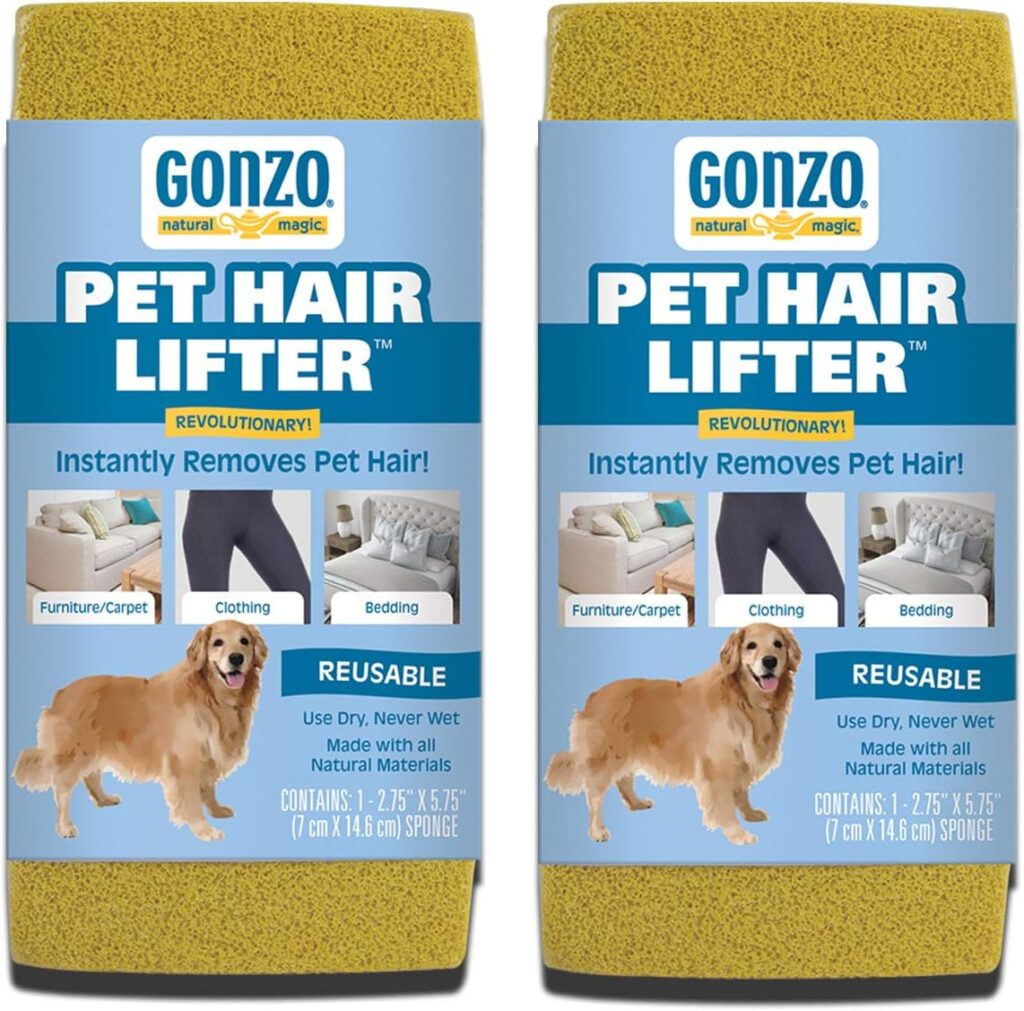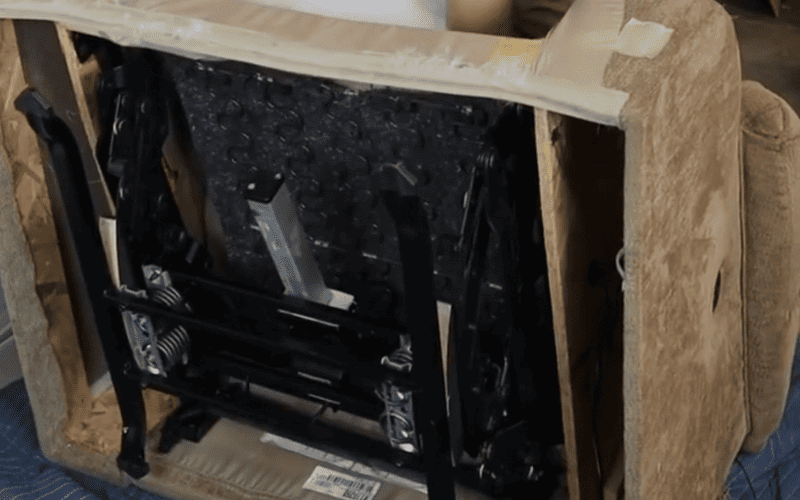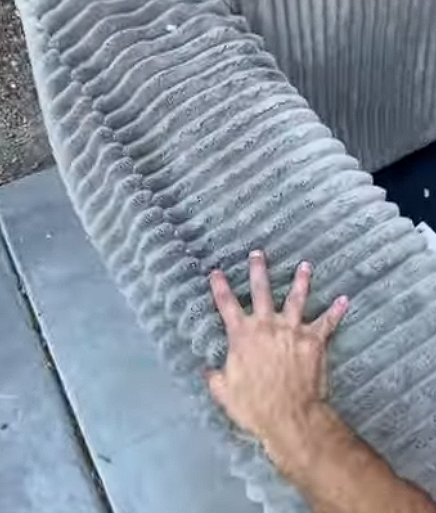The Struggle with Pet Hair on Furniture Upholstery
Pet hair can quickly accumulate on furniture upholstery, especially if your furry friends love lounging on the couch.
Whether you have a dog or cat, their hair tends to stick to fabric surfaces, making it a common challenge for pet owners.
Not only can excessive pet hair make your furniture look unkempt, but it can also trigger allergies and contribute to poor indoor air quality. Regularly removing pet hair is essential to maintaining a clean, healthy living space and prolonging the life of your furniture.
In this guide, we’ll share easy tricks and methods you can use to efficiently get rid of pet hair, making your home more comfortable for everyone.
How to Minimize Pet Hair on Furniture: Preventative Measures Every Pet Owner Should Know
Cover Your Furniture
One of the easiest ways to prevent pet hair from embedding itself in your furniture upholstery is by using washable covers or pet-friendly blankets.
These protective layers act as a barrier between your pet and the fabric, making it easy to remove and clean the hair-covered cover without the hassle of deep-cleaning your upholstery. Look for machine-washable, durable materials that can withstand repeated use and washing.
Not only do covers make cleaning easier, but they also protect your furniture from stains and claw marks.
Regular Grooming
Consistently grooming your pet is key to reducing the amount of hair they shed onto your furniture.
Regular brushing helps capture loose fur before it has the chance to fall onto upholstery, especially during shedding season.
Depending on your pet’s breed, you may need to groom daily or weekly. Using the right grooming tools, such as a de-shedding brush or comb, can significantly cut down on loose hair.
Grooming also benefits your pet’s skin and coat health, which further reduces excess shedding.
Pet-Designated Areas
Creating designated areas for your pets to relax can help limit the spread of pet hair throughout your home.
Encourage your pets to use specific pieces of furniture, such as a pet-friendly couch or their own pet bed. You can train your pet to stay off certain items of furniture by using positive reinforcement techniques.
By confining most of the shedding to these areas, you’ll have fewer surfaces to clean, and your main furniture will stay hair-free for longer.
Anti-Shedding Products
In addition to grooming, you can minimize shedding by using specially formulated pet anti-shedding shampoos and sprays that reduce the amount of loose fur.
Many of these products are designed to nourish your pet’s skin and coat, which helps minimize shedding over time. Regular use of anti-shedding sprays can leave your pet’s coat shiny and smooth, while keeping excess hair off your furniture.
Combine these products with your grooming routine for the best results in keeping pet hair under control.
Essential Tools and Products for Pet Hair Removal from Upholstery
Lint Rollers
Lint rollers are one of the quickest and easiest tools for removing pet hair from furniture. They come with adhesive sheets that pick up loose fur as you roll them over your upholstery.
Lint rollers are especially effective for small areas or touch-ups when you need to remove hair in a hurry.
Compact and easy to store, they’re a great solution to keep handy around your home.
While perfect for spot cleaning, they may not be as efficient for larger furniture or deeply embedded hair.
Rubber Gloves
Wearing dampened rubber gloves is a surprisingly effective way to attract and lift pet hair off upholstery.
The rubber creates friction when rubbed across fabric, causing pet hair to stick to the glove’s surface. For stubborn or deeply embedded hair, lightly dampen the gloves for extra pulling power.
This method is affordable and works well on most fabric types. Simply rinse the gloves under water to clean off the collected hair, and you’re ready for the next round of cleaning.
Vacuum Cleaners with Upholstery Attachments
Investing in a vacuum cleaner with pet-specific upholstery attachments can make pet hair removal more efficient and thorough.
These vacuums often feature specialized brushes and strong suction designed to pull pet hair out of fabric fibers.
An upholstery attachment allows you to reach into crevices and corners, ensuring a deep clean. Some vacuums also have anti-tangle technology, preventing hair from clogging the machine.
This tool is essential for homes with heavy shedders or multiple pets.
Pet Hair Remover Brushes
Pet hair remover brushes or sponges are designed specifically for tackling hair on upholstery.
These tools often have textured surfaces that easily grab hair from fabric and remove it in a single stroke. Unlike lint rollers, which rely on adhesive sheets, these brushes can be used repeatedly without needing replacements.
Pet hair remover brushes are an eco-friendly and cost-effective option for cleaning large areas of furniture. They’re also great for hard-to-vacuum spots like cushions or fabric seams.
Sticky Tape Method
Wide adhesive tape is a simple, yet effective solution for removing pet hair from tight or hard-to-reach areas on furniture. Press the sticky side of the tape onto the fabric and lift it away to collect the pet hair.
This method works particularly well for edges, corners, and around buttons or seams where other tools might struggle to reach.
While this method can be tedious for large areas, it’s highly effective for targeting stubborn patches of hair. Keep a roll of wide tape handy for quick spot treatments.
Keep in mind that this may cause pilling in the furniture.
It may also leave some of the sticky residue from the tape and its best to remove this with Goo Gone.
This method does work extremely well but make sure you have a fabric shaver on hand to take care of the pilling if it happens.
DIY Techniques for Removing Pet Hair from Furniture Upholstery
Fabric Softener
A simple and effective DIY method for removing pet hair is using fabric softener.
Lightly misting fabric softener mixed with water onto your furniture can help loosen pet hair from the fabric, making it easier to remove. The best approach for this is getting an empty clean spray bottle and mix the fabric softener with the water. Typically best to do 3/4 water and 1/4 fabric softener.
The fabric softener reduces static cling, allowing hair to be wiped away effortlessly with a cloth or vacuumed up.
Be sure to test the mixture on a small area of your upholstery first to ensure it won’t cause damage or stains.
This method not only removes hair but also leaves your furniture smelling fresh.
Baking Soda Method
The baking soda method is another useful trick to remove pet hair while freshening up your furniture.
Simply sprinkle a light layer of baking soda over the fabric, let it sit for 10-15 minutes, and then vacuum the area thoroughly. Baking soda helps to loosen embedded pet hair and neutralizes odors at the same time.
This method is particularly effective on thicker fabrics where hair tends to get stuck deep in the fibers. It’s an inexpensive and chemical-free way to keep your upholstery clean and hair-free.
Static Electricity
Using static electricity is a clever way to pull pet hair off upholstery. You can create static by rubbing a dryer sheet or a balloon across the surface of your furniture.
The static charge causes pet hair to cling to the object, making it easier to gather and remove. This technique is especially useful for picking up hair on smooth fabrics like microfiber or leather.
Dryer sheets also add a pleasant scent while helping to reduce future static cling, making this method both functional and freshening.
It’s best to try the dryer sheet method on an inconspicuous location on the furniture and be sure it doesn’t leave any markings behind. If it does, then water typically does the trick to remove it.
Dealing with Stubborn Pet Hair on Different Upholstery Types
Velvet & Microfiber
Velvet and microfiber are delicate fabrics that tend to cling to pet hair, making removal a challenge.
To prevent damage while cleaning these materials, use a soft-bristled brush or a rubber glove to gently lift hair without pulling on the fibers.
For microfiber, a slightly damp sponge can also help gather the hair without harming the fabric.
Avoid harsh tools like metal brushes or abrasive sponges, as they can easily leave scratches or ruin the fabric’s soft texture.
Regularly vacuuming with an upholstery attachment can also help prevent hair buildup.
Leather & Faux Leather
Pet hair tends to accumulate less on leather and faux leather surfaces, but it can still become a nuisance.
To safely remove hair from these materials, use a dry microfiber cloth or lightly dampened cloth to wipe it off. Avoid harsh chemicals that could damage the surface.
You can also use a rubber glove to attract hair, as the material works well with leather’s smooth texture.
To maintain the surface and prevent static that attracts hair, regularly condition your leather furniture with a specialized leather cleaner.
Wool & Heavier Fabrics
Wool and heavier fabrics tend to trap pet hair deep within their fibers, making it harder to remove.
A pet hair remover brush or a vacuum with strong suction and upholstery attachments works best for these types of fabrics. For more stubborn hair, try using the baking soda method, as the powder helps loosen embedded hair before vacuuming.
You can also roll a dampened rubber glove or lint roller over the surface to pull out trapped hair.
Since these fabrics are dense, regular maintenance is key to keeping hair from becoming too embedded over time.
Keeping Your Home Hair-Free with Consistent Maintenance
Consistent Maintenance is Key
Maintaining a pet hair-free home requires regular effort and attention. By sticking to a consistent cleaning schedule and grooming your pets frequently, you can minimize the amount of hair that accumulates on your furniture.
Using the right tools and techniques will not only keep your home cleaner but also extend the life of your furniture and improve indoor air quality.
With these simple yet effective measures, you can easily stay on top of pet hair before it becomes overwhelming.
Adopt These Easy Tricks for a Cleaner Home
The tricks and tools we’ve outlined are easy to integrate into your daily or weekly routines.
From preventative measures like using covers and grooming to DIY methods for removing stubborn hair, these steps will help keep your home clean and comfortable, even with pets.
By applying these techniques regularly, you’ll enjoy a fresh, hair-free living space without sacrificing your pet’s comfort or time together.






























